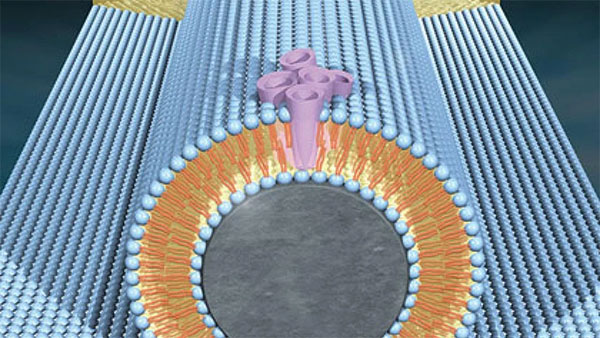Nanocircuitry: Miniaturizing Electronics to the Nanoscale
What is Nanocircuitry?
Nanocircuitry refers to the design, fabrication, and application of electronic circuits at the nanoscale, typically involving components smaller than 100 nanometers. By shrinking traditional electronic components to these minuscule dimensions, nanocircuitry enables the development of ultra-small, high-performance, and energy-efficient devices that can revolutionize various fields, from computing and communications to healthcare and environmental monitoring.

Key Components of Nanocircuitry
Nanocircuitry encompasses several essential components that work together to process, store, and transmit information at the nanoscale:
Nanowires
Nanowires are one-dimensional nanostructures that serve as the building blocks for nanocircuitry. These thin, elongated structures can be made from various materials, such as metals, semiconductors, or conductive polymers, and exhibit unique electrical and optical properties due to their high surface-to-volume ratio and quantum confinement effects. Nanowires can act as interconnects, transistors, or sensors in nanocircuits.
Carbon Nanotubes
Carbon nanotubes (CNTs) are cylindrical nanostructures made of rolled-up sheets of graphene. Their exceptional electrical conductivity, mechanical strength, and thermal stability make them promising candidates for nanocircuitry applications. CNTs can be used as transistors, interconnects, or even as active components in nanoelectromechanical systems (NEMS).
Molecular Switches
Molecular switches are nanoscale devices that can reversibly switch between two or more stable states in response to external stimuli, such as light, electric fields, or chemical reactions. These switches can be based on various molecular systems, such as rotaxanes, catenanes, or photochromic molecules, and offer the potential for ultra-high-density information storage and processing in nanocircuits.
Fabrication Techniques for Nanocircuitry
Creating nanocircuits requires precise control over the arrangement and assembly of nanoscale components. Several fabrication techniques have been developed to achieve this level of control:
Electron Beam Lithography
Electron beam lithography (EBL) is a high-resolution patterning technique that uses a focused beam of electrons to write nanoscale patterns on a substrate coated with an electron-sensitive resist. After exposure and development, the patterned resist can be used as a mask for subsequent etching or deposition steps to create nanoscale components and circuits.
Self-Assembly
Self-assembly is a bottom-up approach that exploits the intrinsic properties of molecules or nanoparticles to spontaneously organize into ordered structures. By carefully designing the building blocks and controlling the assembly conditions, such as temperature, pH, or surface chemistry, complex nanocircuits can be created through self-assembly processes, potentially enabling large-scale and cost-effective fabrication.
Atomic Layer Deposition
Atomic layer deposition (ALD) is a thin film deposition technique that allows for precise control over the thickness and composition of nanoscale layers. By alternating the exposure of a substrate to different precursor gases, ALD can create highly conformal and uniform films with atomic-level precision, making it suitable for fabricating ultra-thin dielectrics, barriers, or conductive layers in nanocircuits.
Applications of Nanocircuitry
Nanocircuitry has the potential to revolutionize various fields by enabling the development of ultra-small, high-performance, and energy-efficient devices:
Nanoelectronics
Nanocircuitry is at the heart of nanoelectronics, aiming to create electronic devices and systems at the nanoscale. By pushing the limits of miniaturization, nanocircuitry can lead to the development of ultra-high-density memory devices, ultra-fast processors, and low-power sensors for a wide range of applications, from computing and communications to healthcare and environmental monitoring.
Quantum Computing
Nanocircuitry plays a crucial role in the development of quantum computing hardware. By creating nanoscale superconducting circuits, such as Josephson junctions and superconducting qubits, researchers can build quantum processors that harness the principles of quantum mechanics for computation. Nanocircuitry enables the precise control and manipulation of quantum states, which is essential for realizing large-scale quantum computers.
Neuromorphic Computing
Neuromorphic computing aims to emulate the structure and function of biological neural networks in electronic circuits. Nanocircuitry provides the building blocks for creating artificial synapses and neurons at the nanoscale, enabling the development of brain-inspired computing systems that can efficiently process complex and unstructured data, such as images, speech, and natural language.
Challenges and Future Perspectives
Despite the remarkable progress in nanocircuitry, several challenges need to be addressed for its widespread adoption. One of the main challenges is the reliability and reproducibility of nanoscale components and circuits. The small size and high surface-to-volume ratio of nanostructures make them susceptible to variations in fabrication processes, environmental factors, and device operation, which can impact their performance and longevity.
Future research in nanocircuitry will focus on addressing these challenges while exploring new materials, fabrication techniques, and device concepts. The integration of nanocircuitry with other emerging technologies, such as flexible electronics, wearable devices, and the Internet of Things (IoT), will open up new possibilities for smart and connected systems that can sense, process, and communicate information at the nanoscale.
